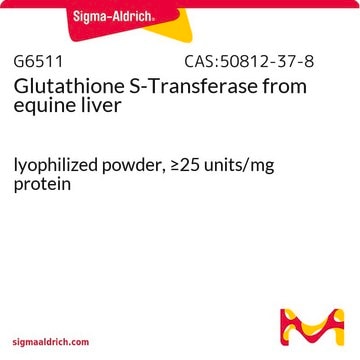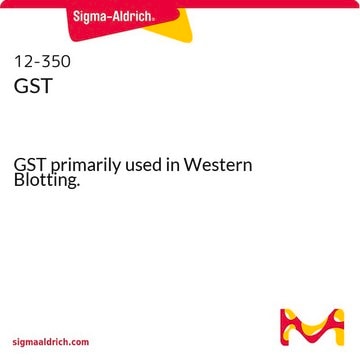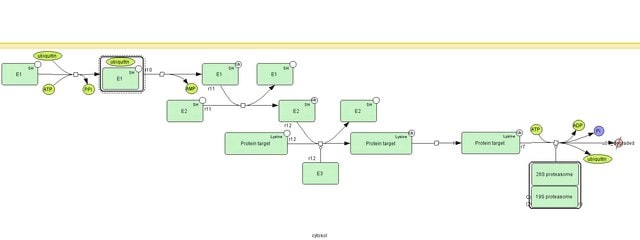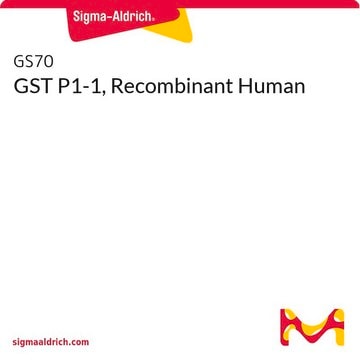SRP5348
GST protein, tag-free
recombinant, expressed in E. coli, ≥70% (SDS-PAGE), buffered aqueous glycerol solution
Seleccione un Tamaño
108,00 €
Seleccione un Tamaño
About This Item
108,00 €
Productos recomendados
recombinante
expressed in E. coli
Ensayo
≥70% (SDS-PAGE)
Formulario
buffered aqueous glycerol solution
mol peso
~25 kDa
técnicas
ligand binding assay: suitable
Nº de acceso NCBI
Condiciones de envío
dry ice
temp. de almacenamiento
−70°C
Información sobre el gen
Escherichia coli IAI39 ... gst> gst
gst(7152360)
Descripción general
Aplicación
Forma física
Nota de preparación
Código de clase de almacenamiento
10 - Combustible liquids
Clase de riesgo para el agua (WGK)
WGK 1
Punto de inflamabilidad (°F)
Not applicable
Punto de inflamabilidad (°C)
Not applicable
Elija entre una de las versiones más recientes:
Certificados de análisis (COA)
¿No ve la versión correcta?
Si necesita una versión concreta, puede buscar un certificado específico por el número de lote.
¿Ya tiene este producto?
Encuentre la documentación para los productos que ha comprado recientemente en la Biblioteca de documentos.
Los clientes también vieron
Filtros activos
Nuestro equipo de científicos tiene experiencia en todas las áreas de investigación: Ciencias de la vida, Ciencia de los materiales, Síntesis química, Cromatografía, Analítica y muchas otras.
Póngase en contacto con el Servicio técnico











